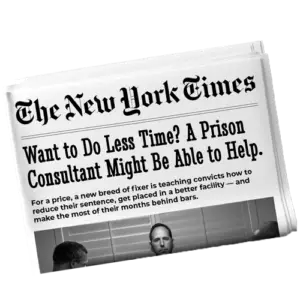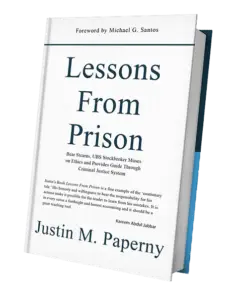Introduction
In our prior proffer articles, we’ve covered:
- Top 10 Things to Know About a Proffer
- Understanding the Risks of a Proffer
- Proffer vs. Plea Agreement: Understanding the Difference
Today, we’re going to explore a lesser-known but equally important legal tool: the reverse proffer.
If you or a loved one is enduring a federal investigation, you’ve likely heard the term “proffer.” But a reverse proffer flips the traditional model. Unlike a proffer—where a defendant shares information with the government—a reverse proffer puts the government in the presenter role. In this meeting, it’s the prosecutors and agents who do the talking, often in front of the defendant and their attorneys (note, I had a proffer in my case, but never a reverse proffer).
While not used in every case, reverse proffers can be powerful tools. When used effectively, they can help defendants better understand the strength of the government’s case, encourage plea discussions, and even influence strategy around cooperation, sentencing mitigation, or trial preparation.
At White Collar Advice, we work closely with clients and defense counsel to prepare for these moments. Understanding what a reverse proffer is—and what it’s not—is essential to making good decisions.
What is a Reverse Proffer?
In a reverse proffer, the government—typically prosecutors and federal agents—shares some of the evidence they’ve gathered against a defendant. The goal isn’t to negotiate or demand a plea on the spot. Instead, the government is trying to show the defendant the strength of their case, hoping it will persuade them to plead guilty, cooperate, or avoid trial.
What Happens During a Reverse Proffer?
- The government presents selected evidence (e.g., recordings, emails, text messages, surveillance, bank records).
- The defendant and their legal team listen but do not speak.
- No formal agreements are made.
- Defense counsel may ask questions or request clarification after the presentation.
A reverse proffer is not a negotiation—it’s a presentation designed to shift the defendant’s perspective.
Why Does the Government Offer Reverse Proffers?
Federal prosecutors don’t offer reverse proffers randomly. They do it when they believe their case is strong and they want to:
- Show the defense what they’re up against.
- Encourage a plea discussion or cooperation.
- Avoid the cost and uncertainty of trial.
From their perspective, it’s a strategy: use a preview of the evidence to increase pressure on the defendant to resolve the case.
How Should a Defendant Respond to a Reverse Proffer?
The biggest mistake a defendant can make is walking into a reverse proffer unprepared or viewing it as a minor procedural step. This meeting often signals a turning point in the case.
Here’s how we advise our clients to prepare:
1. Use the Meeting to Create a Strategy
If the government’s case is strong and supported by hard evidence (e.g., wiretaps, surveillance, cooperating witnesses), then a plea may be the most strategic path forward. But if the evidence is circumstantial or incomplete, it may be worth pushing back or preparing for trial.
2. Do Not Speak During the Presentation
Let your lawyer do all the talking. This is not the time to explain, rationalize, or defend yourself. Anything you say can be used against you later.
3. Start Preparing for Sentencing Immediately
If the reverse proffer makes it clear that conviction is likely, then it’s time to shift toward mitigation. That means building your narrative, contributing to society, documenting progress, and preparing for the Presentence Investigation Report (PSR).
What Federal Judges Have Told Us About This Stage
Our interviews with Federal Judges Mark Bennett and Stephen Bough offer powerful insights here. They’ve made it clear that judges care about what defendants do between indictment and sentencing.
As Judge Bough said: “Don’t just tell me you’re sorry. Show me how you’re fixing the damage.”
Defendants who respond to a reverse proffer by taking action, rather than panicking or freezing, stand a far better chance of persuading the judge later.
How Former FBI Agent Paul Bertrand Describes the Reverse Proffer Moment
In our interview with retired FBI Agent Paul Bertrand, he emphasized that a reverse proffer is a tool of persuasion: “Agents build cases full-time. They bring defendants into that room to show them the evidence because they believe the case is ready.”
But Paul also stressed that defendants must match that energy with their own preparation. He warned against the mindset that financial crimes are “victimless” or that cooperation guarantees leniency. As he told us, in all his years, only one defendant avoided prison by cooperating. The reverse proffer should be a wake-up call—not a reason to freeze, but a reason to start preparing.
Reverse Proffer Example: Wire Fraud with $5 Million in Losses
Let’s say you’re facing charges for wire fraud involving $5 million in losses. At a reverse proffer, prosecutors may show:
- Email threads between you and co-conspirators
- Evidence of wire transfers tied to shell companies
- Testimony or cooperation from a former business associate
- Financial records showing movement of funds
You may already know some of this, but hearing it directly from federal agents—with detail and confidence—can be jarring. Many defendants leave reverse proffers realizing for the first time just how thoroughly the government has built its case.
The Sentencing Guidelines for this conduct would look something like this:
- Base Level: 7
- Loss Amount $5M: +18
- 10+ victims: +2
- Sophisticated means: +2
- Acceptance of responsibility (if applicable): -3
Estimated offense level: 26 → Sentencing range: 63–78 months (for a first-time offender)
Judges can still depart from these ranges—but only when there’s a record of meaningful mitigation.
Final Thoughts: A Reverse Proffer is Not the End—It’s a Fork in the Road
A reverse proffer isn’t designed to scare you. It’s designed to persuade you. Whether or not you cooperate, go to trial, or plead, what you do next will shape how you’re judged.
Our advice is simple: listen, reflect, and act. Use the information to chart a new path forward—one built on preparation, accountability, and action.
If you’ve received notice of a reverse proffer, now is the time to get serious. Schedule a call or join our next webinar workshop to learn how to build your strategy from this moment on.
Justin Paperny



